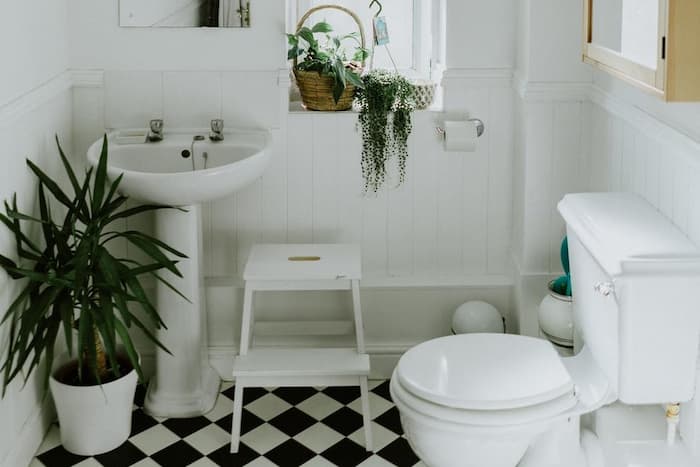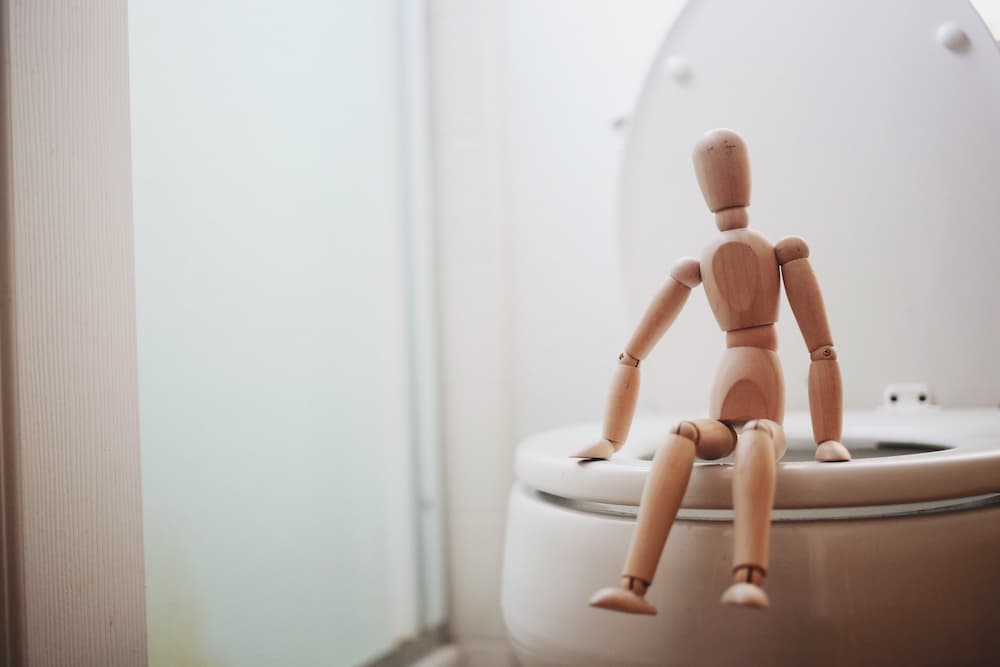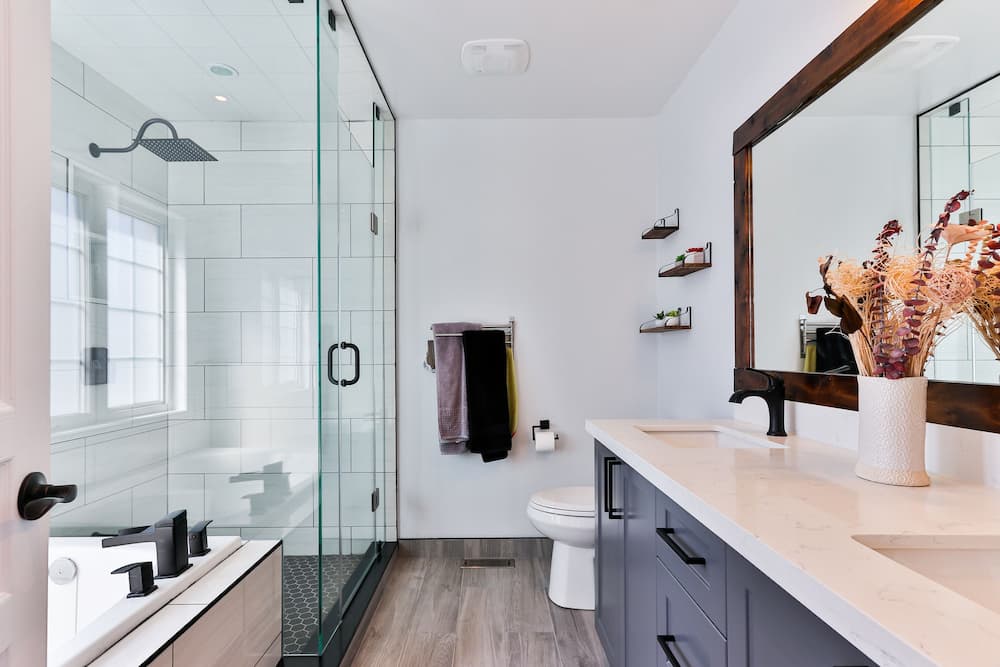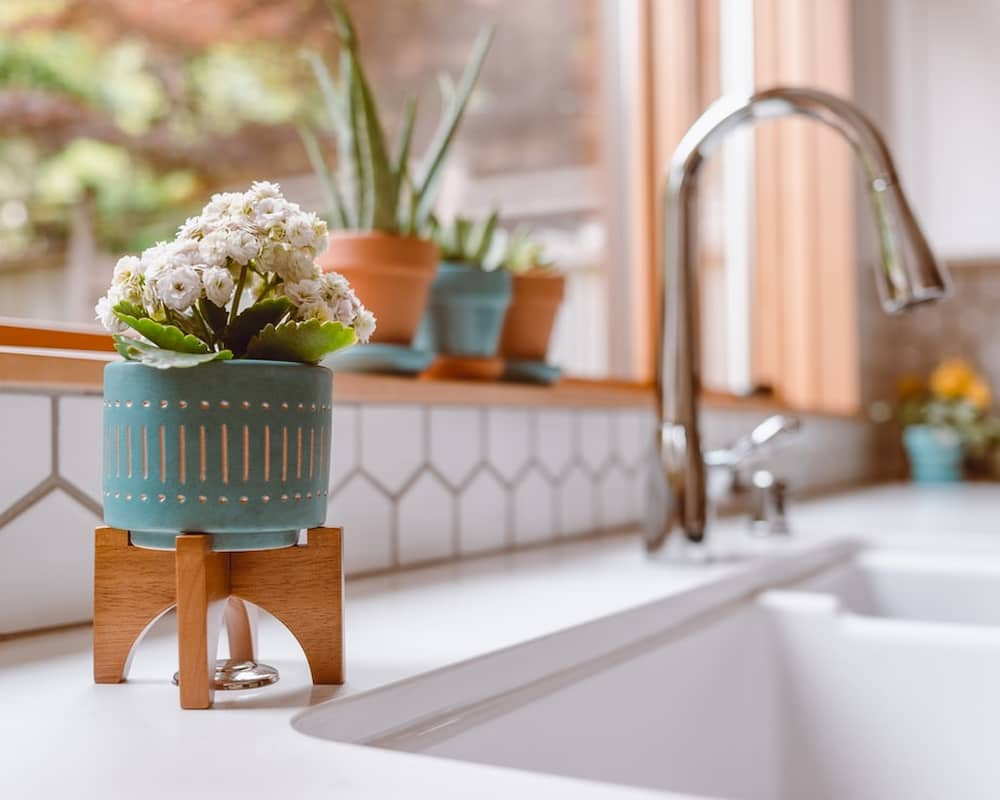* We independently evaluate all recommended products and services. If you click on links we provide, we may receive compensation.
Has the toilet clogged? Again?
Toilet maintenance is crucial when it comes to caring for your bathroom. Every homeowner across the country has come once or twice across a common toilet problem when they least expected it; hence, it is important to know how to solve the problems and what to do to ensure they do not occur.
This article will brief you about everything, from common problems faced by people across the U.S to solving them. So, let’s begin.

Components of a Toilet
However, before we start discussing the problems, we must discuss the main components of the toilet, so we know how they all work collectively. This will help us to understand the issues better and find solutions.
Water Knob
The first thing you need to do whenever you have an issue with a toilet is turn off the water supply. Find the small knob attached to the wall near the toilet and turn the main water supply off.
Tank Lid
As the name suggests, it’s the lid of the toilet’s tank. While it is pretty easy to take it off, it is heavy. So make sure to handle it carefully.
Toilet Flush Lever
It is on the outside of the toilet, usually situated on the tank. It flushes the toilet, and it is attached to the rubber flapper on the inside of the tank.
Rubber Flapper
A rubber flapper prevents the water going into the bowl from the tank.
Pump
It refills the tank with water after every flush.
Float
It raises and lowers the water level inside the tank and tells the pump when to stop refilling the tank with water.
Overflow Tube
It is a small, elongated, thin tube that limits the water level that needs to be inside a tank.
Common Toilet Problems and their Solutions
Following are some of the most common problems that people all around America face when it comes to the toilet:
Toilet runs intermittently
Who gets frustrated when this happens? The answer is everyone! Most plumbers call this problem a ‘phantom flush’ which is due to a slow leak inside that occurs from the tank and into the bowl of the toilet. Usually, it is either due to a bad flapper seat or flapper.
To change the flapper, follow the following steps:
- Shut off the water supply valve
- Remove the lid from the tank
- Flush once to remove as much water as possible from the tank
- Remove the lift chain and disconnect it from the flush lever
- Remove the flapper from the overflow tube
- You will notice a seal on the valve seat; wipe it off to ensure it is sealed perfectly
- Line the new flapper over the overflow tube and the drain
- Attach the lift chain back to its place
- Push down the flush lever and check if the flapper is moving in the correct motion
- Adjust until it is right
- Turn the water supply on
- Check if the water is filling up in the tank correctly and the flapper valve is keeping a tight seal
- Put the lid back on, and you are done!
Toilet won’t stop running
This is one of the most common problems when it comes to the toilet. The water trickling inside the tank might sound like a hissing noise. However, do not worry because it is pretty easy to fix. Some of the most common causes of this include a worn-off or damaged flapper, an improper chain between the flapper and the flush lever, or a float that is not in its position.
- Cause: Damaged Flapper
We have already discussed in the above part how to fix the flapper. So let’s move on to the next two causes and their solutions. The first thing you need to do is turn off the water supply. After that, take the tank lid off and check the insides to detect the problem.
- Cause: Improper chain between the flapper and flush lever
If the flapper chain is the problem, check whether it is connected or disconnected and ensure it is attached to the flush lever and the rubber flapper. Then, push the flush lever once or twice to check whether the chain is too short or long. In either case, you need to ensure that the chain is of the ideal length to open the flapper as soon as the lever is pushed.
- Cause: Float is out of position
If the float is set too high, water will overflow, and if it is set too low, it will cause a weak flush. To fix this issue, you need to inspect for the fill level mark, which is probably present on the inside of the tank. However, if you cannot see the mark, do not worry; just measure one inch down on the overflow tube and mark the point as your fill level mark.
Then, you need to turn on the water from the main supply and flush the toilet to see the water levels with respect to the point marked. If the water is below this point, the float for the pump is too low and vice versa. Therefore, you need to adjust the float according to the mark in either case.
Usually, in older models, you would need to bend the brass rod of the float to adjust its height. Contrarily, in newer models, you need to slide a clip or turn a screw along the length of the road.
Weak Flushes
Is your toilet taking a bit too long to flush everything down? If yes, this is probably due to the holes under the bowl clog’s rim. You can use a wire-hanger or any other wire tool that allows you to hook the clog and then remove it. In order to avoid scratching the bowl, make sure to use a mirror so you can see where the wire is going.
You can also read more about How to Replace a Toilet.



